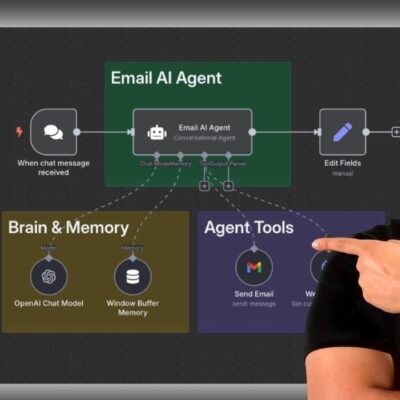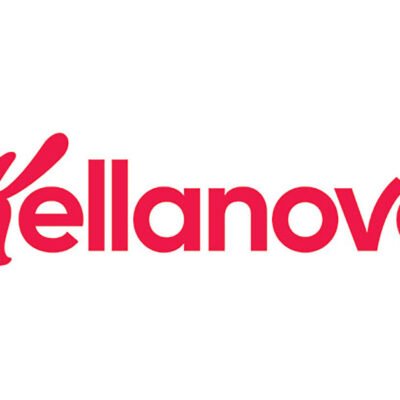Google Expands Opal: Revolutionizing No-Code AI Application Building
On November 6, 2025, Google announced a major expansion of Opal, its no-code artificial intelligence application builder, from a mere 15 countries to a staggering 160. This strategic move marks a significant shift in the workflow automation landscape, enabling users to create mini-applications without writing a single line of code. From workflow automation to content generation and rapid prototyping, Opal aims to streamline complex processes and enhance productivity.
What is Opal?
Launched earlier in 2025, Opal allows users—be it entrepreneurs, marketers, or creators—to design applications by simply describing desired functionalities in natural, conversational language. This marks a departure from more traditional visual workflow builders, which often necessitate some level of technical expertise. Opal focuses on three distinct categories of application use cases: workflow automation, content creation, and rapid product prototyping.
Technical Capabilities and Use Cases
Google has identified three primary categories that highlight the potential of Opal, showcasing how varied and impactful the platform can be:
-
Workflow Automation:
Users can automate complex, multi-step workflows that previously required manual intervention or coding knowledge. For instance, applications have been designed to extract data from web sources, analyze it, and save results directly into Google Sheets. This capability reduces the need for manual data manipulation with tools that can also generate custom reports effortlessly. -
Content Creation:
The platform has gained traction among creators and marketers who utilize Opal to produce optimized content at scale. With capabilities to generate blog posts, social media captions, and video scripts, Opal streamlines the marketing workflow. Additionally, dynamic visual tools allow for the creation of composite media, making it easier for marketers to launch personalized campaigns without extensive design skills. - Rapid Prototyping:
Entrepreneurs can swiftly validate ideas and build minimum viable products. Examples include language learning applications and quiz generators. By transforming ideas into shareable mini-apps, Opal reduces barriers for individuals looking to test concepts without needing development resources.
Opal’s unique approach relies entirely on natural language interfaces, setting it apart from visual workflow builders that often require a deeper understanding of technical and programming concepts.
Competitive Landscape with n8n
The expansion of Opal positions it directly against established workflow automation platforms like n8n, which recently raised $180 million in Series C funding, bringing its total to $240 million and a valuation of $2.5 billion. The founder of n8n, Jan Oberhauser, emphasizes a "fair-code" model that provides a blend of visual workflow building and custom coding resources. This flexibility allows users to leverage both AI autonomy and rule-based systems, addressing a broader range of business needs.
Industry Reactions and Concerns
The announcement received a mixed response from industry observers and content creators. While many praised the ease of use and rapid application development opportunities, concerns were immediately raised regarding the potential for low-quality, AI-generated content flooding the internet.
Critics like Nate Hake have labeled Opal as "a literal AI spam machine," arguing that it contradicts Google Search’s quality guidelines that frown upon mass-produced content. As Google encourages the creation of optimized marketing materials, questions arise about how this fits within the broader context of content authenticity and search quality metrics.
Technical Architecture and Limitations
The technical architecture of Opal remains less transparent compared to the community-driven model of n8n. While n8n promotes extensive integrations and supports self-hosting, which allows businesses to maintain complete control over their data, Opal operates within Google’s ecosystem. This closed-system environment raises concerns over flexibility and user control, particularly for enterprise organizations with specific technical requirements and compliance considerations.
Privacy and Data Governance Considerations
The data governance frameworks surrounding Opal’s offerings remain unclear, particularly when handling sensitive business data or customer information. Compliance with regulations like GDPR and CCPA is paramount, and with n8n providing self-hosting capabilities, organizations can ensure that they remain compliant while controlling data flows. Google’s proprietary model creates dependencies on their commitments regarding privacy and security, which may not necessarily align with all users’ operational needs.
Market Timing and Strategic Positioning
The launch timing intersects with a broader trend across the tech landscape, where automation and AI capabilities are becoming core product offerings rather than supplementary features. Adobe’s launch of AI agents for business customer experience automation showcased the competitive landscape swelling with players aiming to meet high customer demand for automation tools.
Google’s decision to market Opal as a free service may apply pressure on competitors like n8n, which depend on paid plans for revenue. This free model raises questions about Google’s long-term monetization strategies, which could involve leveraging user data for targeted advertising or training its AI models.
Future Development Trajectories
What comes next for Opal is uncertain, as Google has not publicly shared specific plans regarding future features, integrations, or broader roadmap objectives. Correspondingly, n8n has articulated its intent to expand integrations and significantly grow its community contributions, focusing on developing user interfaces that accommodate various team workflows.
Regulatory and Ethical Implications
Finally, the swift growth of platforms enabling automated content creation brings forward a host of regulatory and ethical challenges. Definitions of content authenticity, the necessity of disclosures for AI-generated material, and the challenges of misinformation are looming policy hurdles that need to be addressed. Google’s role in both enabling AI content creation and policing its quality introduces potential conflicts, complicating the regulatory landscape further.
The rapid evolution of no-code platforms like Opal indicates a shifting paradigm in how applications are created, emphasizing accessibility while raising critical ethical, technical, and governance questions that industry stakeholders must navigate.





